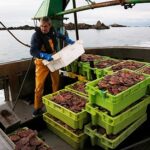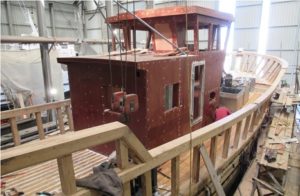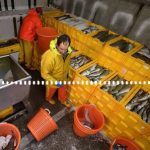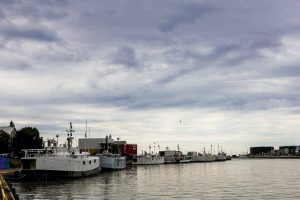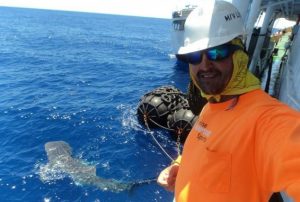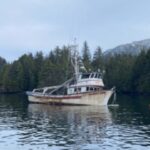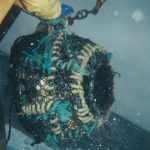Tag Archives: U.S. Fishing Fleet
Op-Ed: Engineering insights when building a trawler
 Constructing a new factory trawler fishing vessel in the United States is not an undertaking for the faint of heart. Thinking back to an article written about 10 years ago, industry scholars predicted a boom in shipbuilding to replace the Alaskan fishing fleet. While naval architects, shipyards and equipment suppliers saw a boom in their immediate future, the renewal of the fishing fleet has barely begun. In fact, less than 5% of the fishing trawlers in the Alaskan fishery have been replaced. The refrigerated seawater (RSW) catcher fleet has seen one large conversion join the ranks. The Amendment 80 fleet has seen three new construction vessels, along with one sponsoning and one conversion project. The American Fisheries Act (AFA) fleet has seen one new-build project completed. Vessels in all three fleets have seen significant upgrades in this time, but the underlying hulls still date from the 1980s and 90s with some going back as far as the 1960s and 70s. more, >>click to read<< 10:16
Constructing a new factory trawler fishing vessel in the United States is not an undertaking for the faint of heart. Thinking back to an article written about 10 years ago, industry scholars predicted a boom in shipbuilding to replace the Alaskan fishing fleet. While naval architects, shipyards and equipment suppliers saw a boom in their immediate future, the renewal of the fishing fleet has barely begun. In fact, less than 5% of the fishing trawlers in the Alaskan fishery have been replaced. The refrigerated seawater (RSW) catcher fleet has seen one large conversion join the ranks. The Amendment 80 fleet has seen three new construction vessels, along with one sponsoning and one conversion project. The American Fisheries Act (AFA) fleet has seen one new-build project completed. Vessels in all three fleets have seen significant upgrades in this time, but the underlying hulls still date from the 1980s and 90s with some going back as far as the 1960s and 70s. more, >>click to read<< 10:16
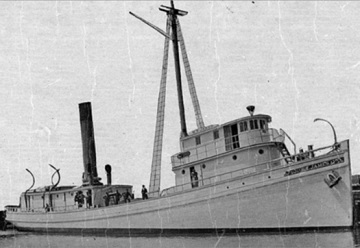
How the U.S. Fishing Fleet Served the Navy and Coast Guard in WWII
In the early days of World War II, demand skyrocketed for vessels to fill the needs of the U.S. sea services. The Coast Guard was no exception as they competed with the U.S. Navy and U.S. Army for new construction as well as privately owned ships. Facing a high demand for vessels, the service turned to the U.S. fishing industry as a source for its cutters. These emergency acquisitions included East Coast trawlers, whalers from both coasts, and East Coast menhaden fishing vessels, such as the Emergency Manning vessel Dow (WYP 353). During World War I and World War II, the menhaden fishing fleet became a ready reserve for the Navy and Coast Guard. Both services needed small, shallow draft vessels for coastal convoy escort, mine planting, minesweeping, and anti-submarine net tending duty. Many of these vessels were purchased or leased, while others were loaned to naval forces by fishing businesses as their contribution to the war effort. >click to read< 18:28


































